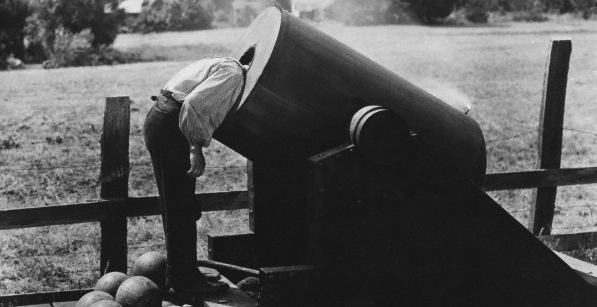Continuing our survey of films available to view from the list of 1000 Greatest Films by They Shoot PIctures, Don’t They?, here are the top nine, all placing within the top 200:
The General #27
Consistently ranked among the greatest films ever made, Buster Keaton’s masterpiece is so brilliantly conceived and executed that it continues to inspire awe and laughter with every viewing. Probably the most cleverly choreographed comedy ever recorded on celluloid.
Intolerance #54
Four separate stories are interwoven: the fall of Babylon, the death of Christ, the massacre of the Huguenots, and a contemporary (early 20th Century) drama — all crosscut and building with enormous energy to a thrilling chase and finale. Through the juxtaposition of these well-known sagas, Griffith joyously makes clear his markedly deterministic view of history, namely that the suffering of innocents makes possible the salvation of the current generation.
Man with a Movie Camera #101
This dawn-to-dusk view fo the Soviet Union offers a montage of urban Russian life, showing the people of the city at work and at play, and the machines that endlessly whirl to keep the metropolis alive. It employs all the cinematic techniques at the
director Dziga Vertov’s disposal — dissolves, split-screens, slow-motion, and freeze-frames — to produce a work that is exhilarating and intellectually brilliant.
L’Age D’Or #102
Unfortunately, the newest update of the TSPDT 1000 pushed Bunuel’s surrealist masterpiece out of the top 100 to make way for the likes of Jaws. To me, this is the true cinematic shark attack.
Nosferatu #103
An unauthorized adaptation of Bram Stoker’s Dracula, Nosferatu is the quintessential silent vampire film, crafted by legendary German director F. W. Murnau (Sunrise, Faust, The Last Laugh). Rather than depicting Dracula as a shape-shifting monster or debonair gentleman, Murnau’s Graf Orlok (as portrayed by Max Schreck) is a nightmarish, spidery creature of bulbous head and taloned claws — perhaps the most genuinely disturbing incarnation of vampirism yet envisioned.
Broken Blossoms #119
This tragic love story between a Chinese Buddhist missionary and an abused British waif was Griffith’s response to critics of The Birth of a Nation, an effort to clear himself of lingering charges of racism. However, cinematic convention forbade physical intimacy between the two races. With this in mind, Griffith took what might have been a bold interracial romance and turned it into something more ethereal: a form of cinematic poetry that engages the viewer through subtle gestures and changes of expression, meticulously choreographed and gracefully assembled.
Birth of a Nation #133
D. W. Griffith’s masterful direction combines brilliant battle scenes and tender romance with a vicious portrayal of African-Americans. It was the greatest feature-length blockbuster yet to be produced in the United States and the first to be shown in the White House. After seeing it, President Woodrow Wilson remarked it was “like writing history with lightning!” However flawed The Birth of a Nation now seems as an historical epic, it is undeniable that the film itself made history.
Un chien andalou #167
Nothing less than the unleashing of the unconscious from all earthy logic, debasing common taste and slicing up eyeballs, ho ho ho ho.
The Last Laugh #178
The film in which F.W. Murnau took the camera off the stand and let it soar. This film was famous for Murnau, as was his nature, experimented tirelessly throughout the film’s making, coming across a dozen or so lasting innovations in the process.




